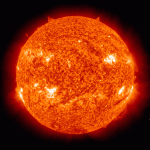
From youtube uploaded by CoconutScienceLab
Published on Mar 8, 2013
Visit my website at http://www.junglejoel.com – the UN may play a role in coming space weather related issues. Please rate and comment, thanks!
Credits: NASA

From youtube uploaded by CoconutScienceLab
Published on Mar 8, 2013
Visit my website at http://www.junglejoel.com – the UN may play a role in coming space weather related issues. Please rate and comment, thanks!
Credits: NASA
From Terra Daily
by Staff Writers
Pasadena CA (JPL) Mar 06, 2013
When researcher Alberto Behar from NASA’s Jet Propulsion Laboratory in Pasadena, Calif., joined an international Antarctic expedition last month on a trek to investigate a subglacial lake, he brought with him a unique instrument designed and funded by NASA to help the researchers study one of the last unexplored aquatic environments on Earth.
Called the Micro-Submersible Lake Exploration Device, the instrument was a small robotic sub about the size and shape of a baseball bat. Designed to expand the range of extreme environments accessible by humans while minimally disturbing the environment, the sub was equipped with hydrological chemical sensors and a high-resolution imaging system. . . . Read Complete Report
From NASA/JPL
Antarctic Sub-glacial Lake Mini-Sub
02.27.13
Embedded video from
NASA Jet Propulsion Laboratory California Institute of Technology
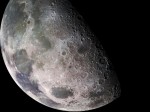
from New Scientist
15:15 02 January 2013 by Jeff Hecht
Who says NASA has lost interest in the moon? Along with rumours of a hovering lunar base, there are reports that the agency is considering a proposal to capture an asteroid and drag it into the moon’s orbit.
Researchers with the Keck Institute for Space Studies in California have confirmed that NASA is mulling over their plan to build a robotic spacecraft to grab a small asteroid and place it in high lunar orbit. The mission would cost about $2.6 billion – slightly more than NASA’s Curiosity Mars rover – and could be completed by the 2020s. . . . Read Complete Report
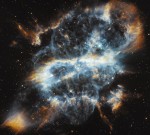
NASA Announces That Magnetic Portals Do Exist!
Star-gates, magnetic portals, vortexes in space: Science fiction writers have given the concept of extraordinary openings in space/time all sorts of names to explain how travelers from far distant realms of space, time or both, arrive in Earth skies. However, this is a science fiction ploy to enable a good story, is it not?
It turns out that they do exist although the discovery is said to be in its infancy. A NASA-funded researcher at the University of Iowa has figured outhow to find them. Yes, some people feel this is old news to the “breakaway civilization” of elite humans who have been to Mars and beyond; even the more skeptical of us, wonder if these amazing facts are just now being released by the government but that they have known about them, even used them for years,perhaps with in-put and assistance from cooperating aliens. . . . Read Complete Report
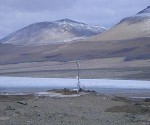
from Terra Daily
by Karen Jenvey and Rachel Hoover for Ames Research Center
Moffett Field CA (SPX) Dec 05, 2012
In one of the most remote lakes of Antarctica, nearly 65 feet beneath the icy surface, scientists from NASA, the Desert Research Institute (DRI) in Reno, Nev., the University of Illinois at Chicago, and nine other institutions, have uncovered a community of bacteria. This discovery of life existing in one of Earth’s darkest, saltiest and coldest habitats is significant because it helps increase our limited knowledge of how life can sustain itself in these extreme environments on our own planet and beyond.
Lake Vida, the largest of several unique lakes found in the McMurdo Dry Valleys, contains no oxygen, is mostly frozen and possesses the highest nitrous oxide levels of any natural water body on Earth. . . . Read Complete Report

Photo: Maya 2012 Detail of carved steps shows 1300 year old Maya text that provides only the second known reference to the so called “end-date” of the Maya calendar CREDIT David Stuart Tulane University.
from youtube
Published on Nov 6, 2012
Uploaded by flippingmonk
Ac Tah, of the Mayan people, gave a talk in Santa Monica last month. In this exert he speaks about what is happening around December 21st 2012 and it’s significance to the world. His heritage is authentic. Check out his website for lots more information and to see the work Ac Tah and a lot of other dedicated people are doing…. www.actah2012.com
from youtube
Published on Oct 1, 2012
THE TRUTH FROM NASA ON DEC 21 2012
The Nibiru cataclysm is a supposed disastrous encounter between the Earth and a large planetary object (either a collision or a near-miss) which certain groups believe will take place in the early 21st century. Believers in this doomsday event usually refer to this object as Planet X or Nibiru. The idea that a planet-sized object could collide with or pass by Earth in the near future is not supported by any scientific evidence and has been rejected as pseudoscience by astronomers and planetary scientists.[1]
The idea was first put forward in 1995 by Nancy Lieder, founder of the website ZetaTalk. Lieder describes herself as a contactee with the ability to receive messages from extra-terrestrials from the Zeta Reticuli star system through an implant in her brain. She states that she was chosen to warn mankind that the object would sweep through the inner Solar System in May 2003 (though that date was later abandoned) causing Earth to undergo a pole shift that would destroy most of humanity. The prediction has subsequently spread beyond Lieder’s website and has been embraced by numerous Internet doomsday groups, most of which link the event to the 2012 phenomenon. Although the name “Nibiru” is derived from the works of the late ancient astronaut writer Zecharia Sitchin and his interpretations of Babylonian and Sumerian mythology, Sitchin denied any connection between his work and various claims of a coming apocalypse. . . . Text published with video on youtube
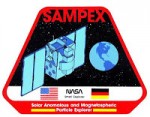
from Science Daily
ScienceDaily (Nov. 1, 2012) — NASA’s very first small explorer, the Solar, Anomalous, and Magnetospheric Particle Explorer or SAMPEX, was launched July 3, 1992 to study the zoo of particles and cosmic rays surrounding Earth. Surviving much longer than its expected mission of three years and providing invaluable observations for those who study space weather, the SAMPEX mission is now almost over. In early November, the spacecraft’s orbit will decay enough that it will re-enter Earth’s atmosphere, burning up completely on re-entry. . . . Read Complete Report
~~~~~~~~~~~~~~~~~~~~~~~~~~~~~~~~~~~~~~~~~~~~~~~~~~~~~~
Photo Below: SAMPEX data have provided some of the most useful observations of the Van Allen Belts — two rings of radiation around Earth. This SAMPEX data shows the belts during what’s known as the Halloween Storms in October 2003, a time when the radiation belts around Earth swelled so much that they merged into a single ring. (Credit: NASA/Goddard Space Flight Center) SOURCE Science Daily.
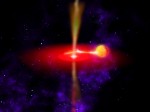
Photo: This artist’s concept illustrates what the flaring black hole called GX 339-4 might look like. CREDIT: NASA
from Before Its News
Thursday, August 23, 2012 20:41
NASA will host a news teleconference at 10 a.m. PDT (1 p.m. EDT), Wednesday, Aug. 29, to announce new discoveries from its Wide-field Infrared Survey Explorer (WISE). The discoveries are related to the distant universe, including supermassive black holes and rare galaxies.
The briefing participants are:
– Daniel Stern, astronomer, NASA’s Jet Propulsion Laboratory, Pasadena, Calif.
– Peter Eisenhardt, WISE project scientist, JPL
– Jingwen Wu, astronomer, JPL
– Rachel Somerville, astrophysics professor, Rutgers University, New Brunswick, N.J.
A link to the teleconference graphics will be available at the start of the event at www.nasa.gov/wise .
For live audio of the teleconference, visit http://www.nasa.gov/newsaudio .
Here are a dozen of the extreme object previously found by WISE. . . . Read Complete Report w/ photos
from youtube
Uploaded by SpaceRip on Jan 3, 2009
Watch this and other space videos at http://SpaceRip.com
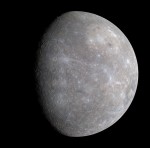
Featured Photo: Color Photo of Planet Mercury. CREDIT NASA
This is a featured picture, which means that members of the community have identified it as one of the finest images on the English Wikipedia, adding significantly to its accompanying article.
NOTE: No comparison photo of Mickey Mouse can be shown because the elitist controllers at Disney are too money hungry to release any illustrations of the best know comic character in the world so regular people like us can use it. Obviously those who control the Disney Corporation are not user friendly folks. But there is more than one way to trap a mouse – Compare at Flickr.
And anyway, what do you expect out of a company who has banned the re-release of the best classic animated movie ever made, “The Song of the South.” because of some misguided “politically correct” beliefs. They are afraid some tight ass might protest and they might lose a few Federal Reserve Notes I guess . . . EDITOR
from Flickr
NASA image acquired: June 03, 2012
This scene is to the northwest of the recently named crater Magritte, in Mercury’s south. The image is not map projected; the larger crater actually sits to the north of the two smaller ones. The shadowing helps define the striking “Mickey Mouse” resemblance, created by the accumulation of craters over Mercury’s long geologic history.
This image was acquired as part of MDIS’s high-incidence-angle base map. The high-incidence-angle base map is a major mapping activity in MESSENGER’s extended mission and complements the surface morphology base map of MESSENGER’s primary mission that was acquired under generally more moderate incidence angles. High incidence angles, achieved when the Sun is near the horizon, result in long shadows that accentuate the small-scale topography of geologic features. The high-incidence-angle base map is being acquired with an average resolution of 200 meters/pixel.
The MESSENGER spacecraft is the first ever to orbit the planet Mercury, and the spacecraft’s seven scientific instruments and radio science investigation are unraveling the history and evolution of the Solar System’s innermost planet. Visit the Why Mercury? section of this website to learn more about the key science questions that the MESSENGER mission is addressing. During the one-year primary mission, MESSENGER acquired 88,746 images and extensive other data sets. MESSENGER is now in a yearlong extended mission, during which plans call for the acquisition of more than 80,000 additional images to support MESSENGER’s science goals.
Credit: NASA/Johns Hopkins University Applied Physics Laboratory/Carnegie Institution of Washington
NASA Goddard Space Flight Center enables NASA’s mission through four scientific endeavors: Earth Science, Heliophysics, Solar System Exploration, and Astrophysics. Goddard plays a leading role in NASA’s accomplishments by contributing compelling scientific knowledge to advance the Agency’s mission.
Photo: Mickey Mouse on Mercury. CREDIT NASA

from Yahoo News
By Tariq Malik | SPACE.com – Mon, Jun 4, 2012
The United States’ spy satellite agency is giving NASA two spare space telescopes free of charge, each potentially more powerful than the Hubble Space Telescope, NASA officials announced today (June 4).
The two spy satellite telescopes were originally built to fly space-based surveillance missions for the National Reconnaissance Office (NRO), but will be repurposed by NASA for astronomical research instead. Their donation to NASA was revealed in a surprise announcement. . . . Read Complete Report